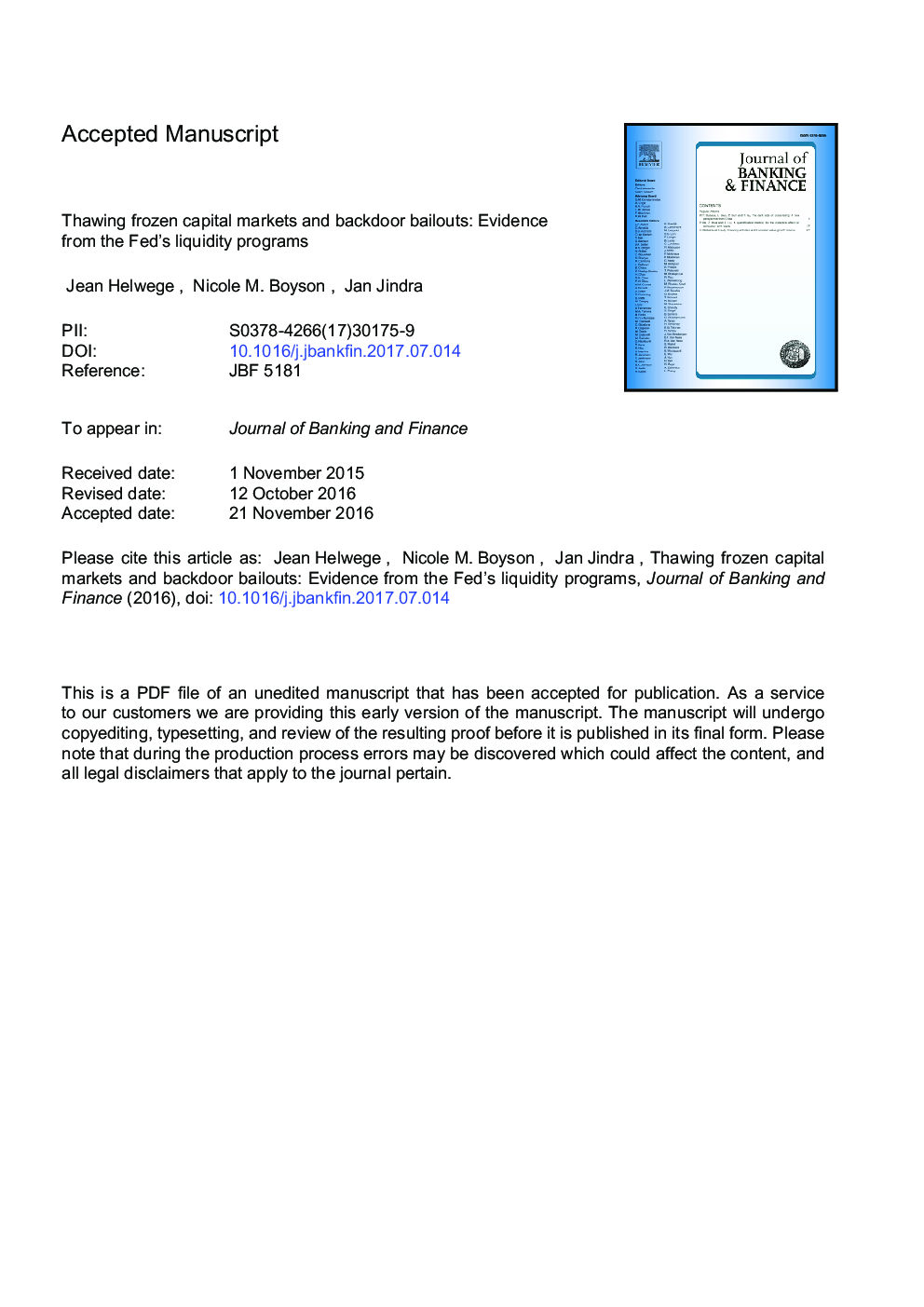| Article ID | Journal | Published Year | Pages | File Type |
|---|---|---|---|---|
| 5088048 | Journal of Banking & Finance | 2017 | 29 Pages |
Abstract
During the subprime crisis, the Federal Reserve introduced several emergency liquidity programs as supplements to the discount window (DW): TAF, PDCF, and TSLF. Using data on loans to large commercial banks and primary dealers, we find that the programs were used by relatively few institutions and thus provided limited relief to banks that relied on short-term debt markets. Although usage increased after Lehman's bankruptcy, most commercial banks avoided the DW and TAF. We also find that the programs were more often used by failed European banks than by healthy US banks, likely because these loans are expensive relative to private market funds. Our results also show that usage of PDCF and TSLF programs, while higher, was more often used by primary dealers in weaker financial position.
Related Topics
Social Sciences and Humanities
Economics, Econometrics and Finance
Economics and Econometrics
Authors
Jean Helwege, Nicole M. Boyson, Jan Jindra,
